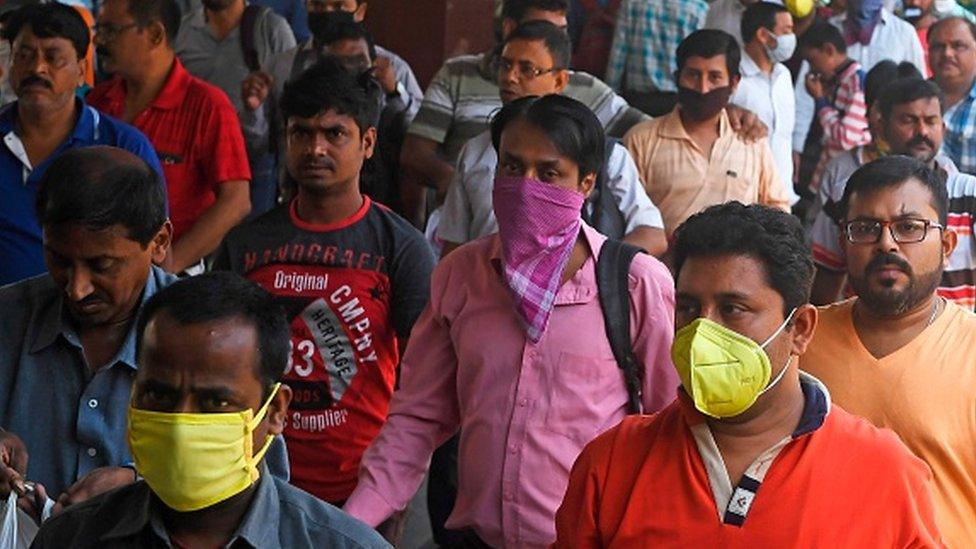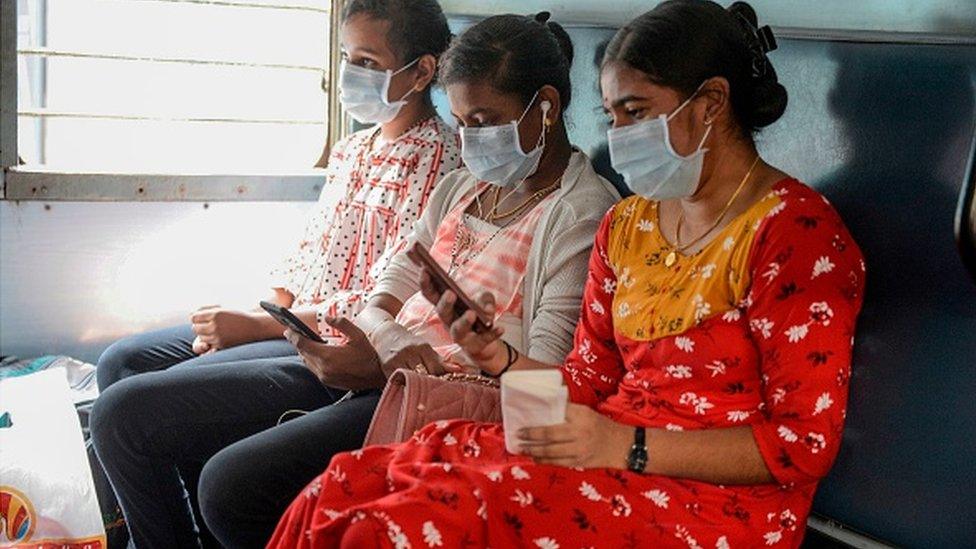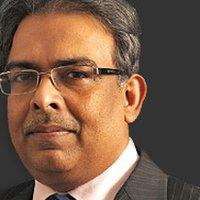Indian coronavirus: Why lock down 1.3bn people?
- Published

India has asked 1.3 billion people to stay at home for three weeks to slow the spread of the coronavirus.
It's an unprecedented lockdown in a country that has reported 519 confirmed cases and 10 deaths so far from the virus. But the government is clearly bracing for the worst - one chilling projection says India could be dealing with about 300 million cases, of which four to five million could be severe.
Prime Minister Narendra Modi said the "total lockdown" was to ''save India, to save its citizens, your family".
Why India requires a "hard" lockdown to fight the virus has much to do with how crowded and densely packed a country it is. Both its public and private spaces are crowded. "The population density and the large number of poor people make it very vulnerable for the easy spread of such an easily transmissible disease," says political scientist Rahul Verma.
With 450 people per square kilometre, India is one of the most densely populated countries in the world. Some of the poor northern Indian states like Bihar and Uttar Pradesh have almost twice as many people per sq km.
Indian households typically have between 4.5 to 5 people per family, compared with an average of 2.5 people in an average American household. Some 40% of Indian families are non-nuclear or joint families. Most of these families will have one person above 60 years of age, one below 18 and two others aged somewhere in between.
Three generations often live together. One infected person in a family means the chance of widespread household spread - one of the fastest modes of transmission - of infection is high. Locking up the entire family to save the elderly who are the most vulnerable possibly makes sense.
Some 75% of Indian households - or 900 million Indians - with an average size of five members live in two rooms or fewer. Three people living in a single room in poor households is common.

Then there's the public transport. Between 85% and 90% of the people who use India's busy railway network travel in overcrowded second-class coaches. Passengers mostly belong to the lower middle class and the poor. Shutting down the railways, which the government has already done, is the only way to prevent infection.
Also, the practice of religion in India is mainly a community exercise manifested through prayers, congregations, and religious musical functions. That's why the government has expressly closed all places of worship and said "no religious congregations will be permitted, without exception".
Funerals are no exception. That's why the government has said a congregation of not more than 20 people will be allowed at funerals.

A SIMPLE GUIDE: What are the symptoms?
AVOIDING CONTACT: Should I self-isolate?
MAPS AND CHARTS: Visual guide to the outbreak
VIDEO: The 20-second hand wash

Clearly, India is a crowd. Political scientist Neelanjan Sircar says "banning clusters of population - public transports, festivals - is essential". But "hard" lockdowns like the one India has embarked on require sharp planning to ensure the supply lines to deliver essential supplies to more than a billion people are not disrupted, and that there's no panic and social unrest. In a largely informal economy, such lockdowns means income losses for tens of millions of people.
It is a huge and unprecedented challenge for Mr Modi's government. "We may be on war-like footing but wars have caused famines in India," says Mr Sircar. "If the costs are too high, people will break the lockdown and suffer badly."

